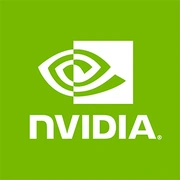NVIDIA GeForce RTX 2070 Max Q

NVIDIA GeForce RTX 2070 Max Q: A Blend of Power and Mobility in 2025
An Overview of Relevance, Performance, and Practical Value in the Era of New Technologies
1. Architecture and Key Features
Turing: The Foundation for Revolution
The GeForce RTX 2070 Max Q is built on the Turing architecture, which in 2025 continues to symbolize the transition to an era of hybrid rendering. The chips are manufactured using TSMC's 12nm process technology, ensuring a balance between energy efficiency and performance.
Unique Technologies:
- RTX (Real-Time Ray Tracing): Hardware support for ray tracing. Even years later, Turing's RT cores demonstrate commendable results in games with a focus on realistic lighting.
- DLSS 1.0: Neural network-based upscaling that improves FPS with minimal loss of quality. By 2025, DLSS 3.0 has become the standard, but the first version is still relevant for optimized projects.
- NVENC: A hardware encoder for streaming and editing. Supports H.264 and H.265, offloading the CPU.
Important: FidelityFX is an AMD technology, so the RTX 2070 Max Q does not support it. However, NVIDIA compensates with its own solutions, such as Adaptive Shading.
2. Memory: Speed and Capabilities
GDDR6: Speed for Mobile Systems
The card is equipped with 8 GB of GDDR6 memory with a 256-bit bus. The bandwidth reaches 448 GB/s (14 Gbps per module), which is sufficient for 1440p gaming and partial immersion in 4K.
Impact on Performance:
- In games with highly detailed textures (e.g., Cyberpunk 2077), 8 GB is the minimal comfortable amount for Ultra settings at 1440p.
- For professional tasks (rendering 3D scenes), the memory could become a bottleneck when working on heavy projects.
3. Gaming Performance
Real Numbers for Gamers
In 2025, the RTX 2070 Max Q remains relevant for 1080p and 1440p gaming. Examples of FPS (average values, Ultra settings):
- Cyberpunk 2077 (1440p): 45 FPS (without RTX), 30 FPS (RTX Medium + DLSS Quality).
- Fortnite (1440p): 90 FPS (DLSS enabled).
- Red Dead Redemption 2 (1080p): 65 FPS.
Ray Tracing: Enabling RTX reduces FPS by 30-40%, but DLSS recovers up to 20-25% of performance. For comfortable gameplay in 2025, it's better to choose projects optimized for DLSS.
4K: Possible in lighter games (CS2, Valorant) — 60+ FPS, but AAA titles will require reduced settings.
4. Professional Tasks
Not Just Gaming
- Video Editing: With NVENC, rendering in Premiere Pro is accelerated by 30-50% compared to CPU rendering.
- 3D Rendering (Blender): 1920 CUDA cores provide speed comparable to the RTX 3060 Mobile but lag behind the new RTX 40 series.
- Scientific Calculations: Support for CUDA/OpenCL makes the card suitable for basic machine learning, but for complex models, it's better to choose cards with larger memory.
5. Power Consumption and Heat Dissipation
Efficiency Above All
- TDP: 80-90W (depending on the laptop model).
- Cooling: Requires a well-thought-out ventilation system. Dual-fan laptops with copper heat pipes are recommended.
- Advice: Use cooling pads for long gaming sessions. Avoid closed spaces (for example, using it on a blanket).
6. Comparison with Competitors
Who is Leading?
- AMD Radeon RX 6600M: Comparable in performance at 1080p but weaker in RTX tasks. Price: $450-$500.
- NVIDIA RTX 3060 Mobile: 15-20% faster in games but more expensive ($600-$700).
- Intel Arc A770M: Good for DX12 projects, but drivers are still less stable.
Conclusion: The RTX 2070 Max Q outperforms competitors from 2022-2023 but falls short against new releases from 2024-2025.
7. Practical Tips
How to Avoid Problems?
- Power Supply: For laptops — the original adapter (usually 150-180W). For PC builds (if the card is used externally) — a PSU of at least 500W.
- Compatibility: Requires PCIe 3.0 x16. Optimal OS — Windows 11 or Linux with NVIDIA drivers 525+.
- Drivers: Regularly update through GeForce Experience. For professional tasks, use Studio Drivers.
8. Pros and Cons
Pros:
- Supports RTX and DLSS.
- Energy efficiency (ideal for thin laptops).
- Affordable price ($400-$500 in 2025).
Cons:
- Limited performance in 4K.
- 8 GB of memory is insufficient for top-tier professional tasks.
- The Turing architecture lags behind Ada Lovelace (RTX 40 series).
9. Final Verdict
Who is the RTX 2070 Max Q Suitable For?
- Gamers: Those looking for a balance between mobility and performance at 1080p/1440p.
- Creative Professionals: For video editing, 3D modeling, and light machine learning.
- Budget Users: If the price of new releases seems inflated, and RTX support is essential.
Why in 2025? Despite its age, this card is a solid choice for the second-hand market and remaining new devices. It proves that Turing technology can still impress.
Prices are current as of April 2025. Check with official suppliers for availability.
Basic
Memory Specifications
Theoretical Performance
Miscellaneous
Benchmarks
Compared to Other GPU
Share in social media
Or Link To Us
<a href="https://cputronic.com/index.php/gpu/nvidia-geforce-rtx-2070-max-q" target="_blank">NVIDIA GeForce RTX 2070 Max Q</a>